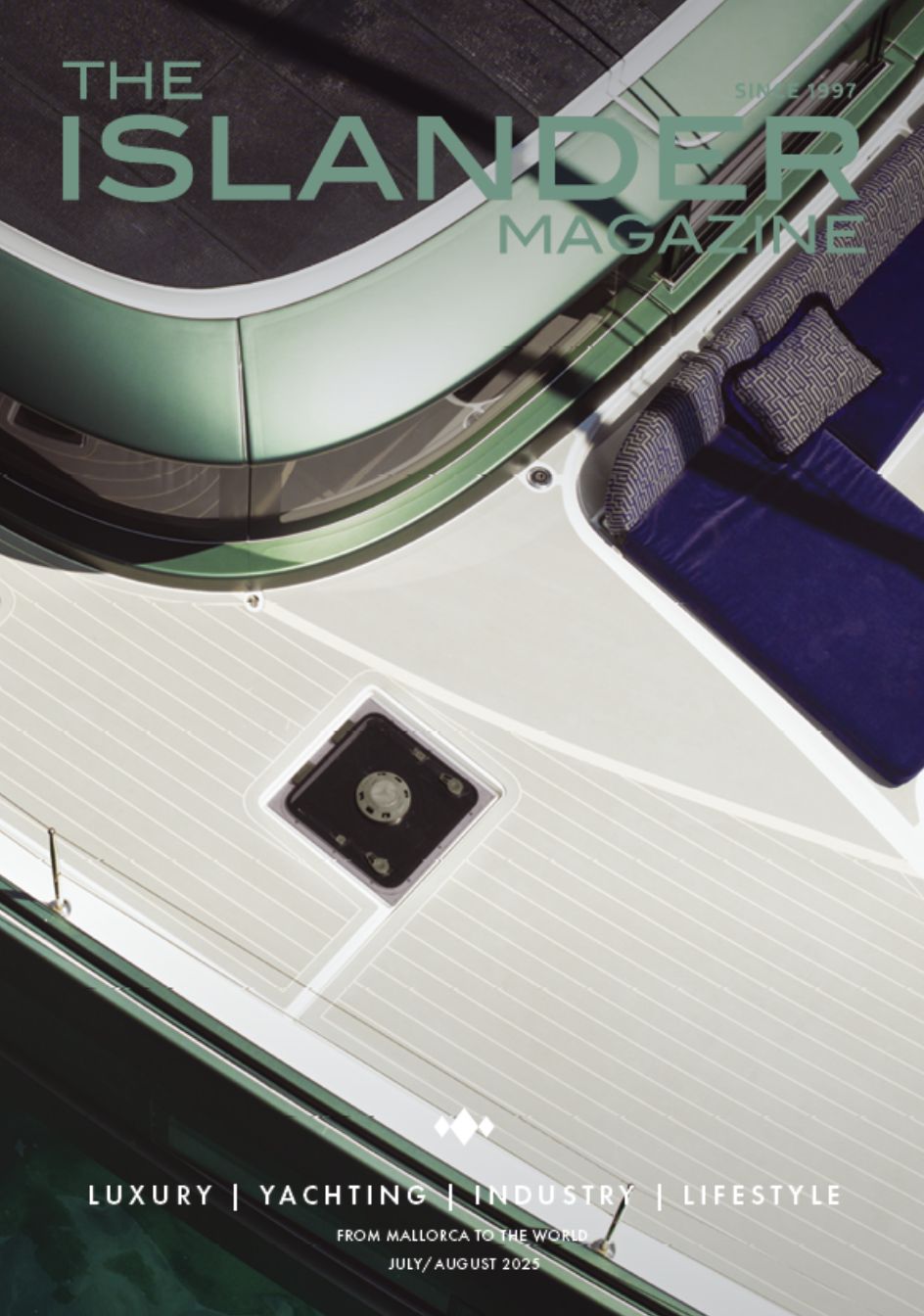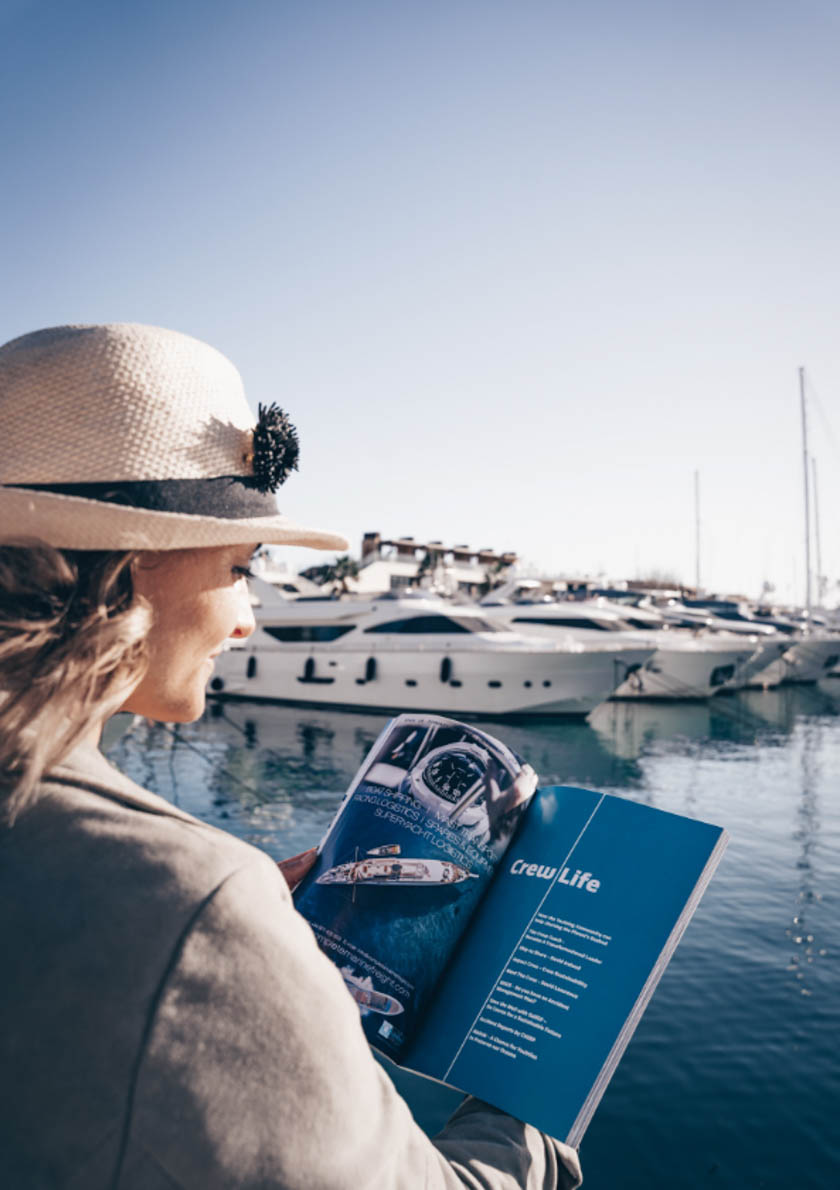This article was first published by The Breeze Studio, a PR, digital and social media agency specialising in communication and content for the yachting and aviation industries. http://breeze-studio.co.uk
The illustrious French firm VPLP (the guys behind speedball boats like the trimaran Spindrift – who slammed no less than 6 records – or the IMOCA Macif who took line honours during the last Vendee Globe), designed the 100ft carbon flyer Comanche: Built to be faster, this racing rocket recently set a new world record for the greatest distance covered in a single 24-hour period, thus making her the speediest monohull on the planet. With top speeds in the mid-30s, her beamy stern, torpedo-like bulb, canting keel and other sail-faster features, she’s definitely one of the boats to beat.
Just like the well-powered Rambler 88, designed by the acclaimed Juan K, which is also like a roaring lion while racing. This fully tuned, high-calibre racer took Monohull Line Honours for the RORC Caribbean 600 early this year, again proving her bullet-scoring potential.
These are cutting-edge, ridiculously fast boats we’re talking about, drawn up by the hottest designers dedicated to creating boats that are at the forefront of the very latest sailing technology. Astonishing then, that an 80 year old ‘classic’ like Velsheda, capable of clambering 9-10 knots upwind and pushing 10-11 knots downwind, gets as least as many ‘wows’ as her spearheaded adversaries. And it’s not only the sailing fans and race followers that can’t keep their eyes off the J-Class yachts; photographers and camera pro’s are also keeping their lenses firmly focused on these stunning ‘old timers’.
But, hold on a minute, we’re talking about 180-tonne giants that are built to designs dating back to the 1930’s. Designs that can’t be tweaked much to better their performance, as they’re strictly tied to class rules.
The J-Class prime lasted only seven years, from 1930 to 1937 but, 85 years later, they have elbowed themselves back in the limelight, in between the newest, high-tech beasts of boats no less.
So let’s have a look at how the J-Class revival came about and why, specifically, we can’t seem to get enough of them.
The J-Class Association, explains: “People find J’s enthralling as they are a rare glimpse of racing history; involving yachts which were the fastest, leading edge racing machines of their day. Now, they are admired and followed for their heritage and history of a by-gone age. The fact that they are still racing competitively as a fleet around the world only adds to their appeal and following.”
This vintage rebirth started in 2000 with the inauguration of the J-Class Association (JCA), whose main aim is to protect the interests of the Class, now and in the future. Class rules were ratified for the construction of replica rebuilds from original plans to keep racing alive and to encourage owners to build new yachts, so they can also partake in the scene. Additionally, the JCA developed a handicap system, enabling the new J’s (built to original designs in modern materials) to race fairly and competitively with the original surviving yachts, like Shamrock V, Endeavour and Velsheda.
The JCA, Class Rules and the handicap system, acted as instigators of the J-Class renaissance. When the JCA was founded there were only three J’s afloat, now, there are a total of eight out on the water. The last time there were eight afloat was in 1934!
Well known Dutch designers HOEK have been involved in a succession of projects as part of this revival, like the 44m Lionheart, the first of a new breed of aluminium J-Class yachts. Her highly competitive, drilled race crew didn’t only bag a first place win during the Menorca Maxi, the Superyacht Cup and the Maxi Yacht Rolex Cup last year, but also came out on top during the J Class Falmouth Regatta in June.
The prestigious Holland Yachtbouw is responsible for Hoek’s most recent launch, the 43m Topaz. She splashed this summer and has been extensively optimised to perform under the J-Class Association handicap system. Mast position, stability, sail area and hull stiffness have all gone through meticulous research in order to deliver a better performance. Next, expected to be built is J9, also developed by Hoek, and detailed Computational Fluid Dynamics (CFD) calculations have shown the design to be extremely interesting. The hull of J11 has been already completed at the Dutch Vitters Shipyards, and whispers are circulating that she’s inches away from being signed. And, J-Yankee is currently in design with the award winning Dykstra Naval Architects who have been instrumental, together with Elizabeth Meyer and Royal Huisman, in sparking this revival with the JK4 Endeavour refit in 1989. They have since been responsible for the refits and rebuilds of: JK3 Shamrock V, JK7 Velsheda as well as performance refits on J5 Ranger, new build Hanuman and JH2 Rainbow. The Dykstra team has learnt through hands-on experience the importance of designing the deck layout as efficient as possible.
Dykstra’s Jeroen de Vos said: “We’ve seen that it’s crews that win races. So we provide them with the optimum deck layout that makes sail handling quick and easy.” Dykstra also worked with the Wolfson Unit in Southampton and the J-Class Association to develop the maximum performance rules, based upon the VPP rating system.
This retro revival seems to be gaining strength year after year: Add the J’s taking part in the 2017 America’s Cup, which promises to be their biggest reunion yet, and it certainly doesn’t look like this wide-spread interest is likely to fade soon.
The attraction reaches much further than potential owners simply wanting to have a piece of history or join an elite club; or even event organisers keen to have those slim beauties slip around the race course. It appeals to industry professionals and the non-sail savvy as well, who consistently keep track of all the J-Class action both live and online.
Their (near) one-design class makes for close racing and a perpetual fight to the finish that keeps a broad audience mesmerised. The J-Class Association adds: “We now have over 5,500 followers on Facebook and our posts regularly reach more than 9,000, particularly when we post video or photographs that accompany racing updates of the fleet. We don’t track precisely, but would agree that these are most likely to be both sailors and non-sailors who just love the photography and video of the boats.”
There’s certainly no denying their jaw-dropping beauty. As renowned sailing photographer Jesús Renedo admits: the slim, sweeping lines of “the big, mighty J-Class yachts” are one of his favourites to shoot. Or as Elizabeth Meyer, instigator of the J-Class comeback in the mid 1980s said: “We love them because they are sublimely beautiful, utterly impractical and fiendishly demanding.” (1)
Simon Relph, editor-in-chief of Palma based nautical publication ‘The Islander’ sums up the attraction perfectly: “It is only in recent years that I have become a big J-Class fan, I guess due mainly to the fact that I got the opportunity to get up close to these epic beauties on the race track at The Palma Superyacht Cup in 2013, when, for the first time ever in the Med, there were five boats on the start line. For me they represent in my mind’s eye ‘The ultimate proper yacht’. They look like a yacht should look, and their movement through the water is just perfection. Seeing these yachts race for two hours with just a few metres of separation typifies to me what yacht racing is all about. The crew -work and tactical decisions become paramount. It will be interesting to see the next America’s Cup in Bermuda, when the J-Class are holding a regatta alongside the new foiling Multihulls. I know which one I would be watching!”
And, considering we live in a world in which almost everything seems to be valued by how fast or state-of-the-art it is, this newfound love of these old style boats, one must admit, is a really cool thing!
By: Danielle Berclouw
Credits:
Photo by Cory Silken courtesy of Dykstra Naval Architects.
Kind thanks to the J-Class Association and Dykstra Naval Architects.
1) http://www.yachtingworld.com/j-class

















0 Comments